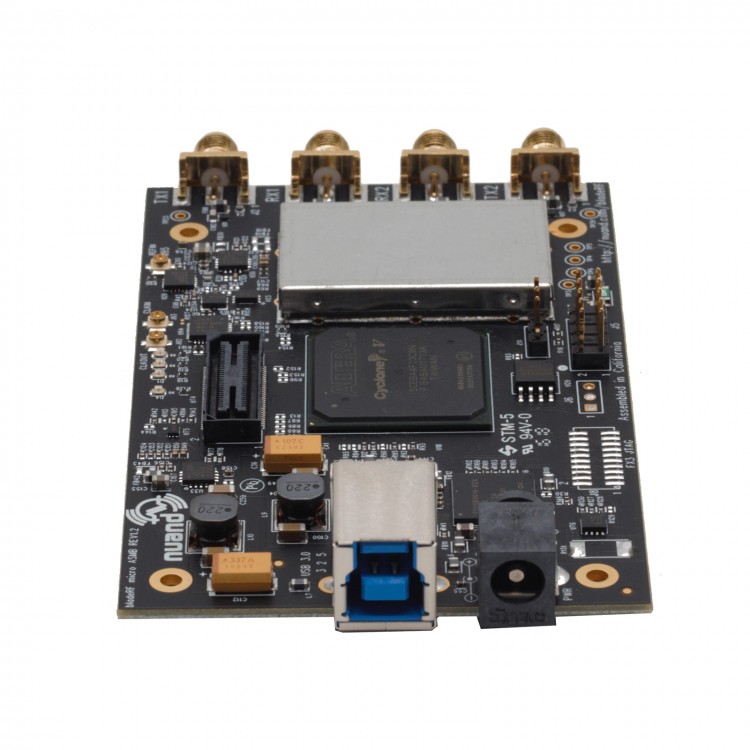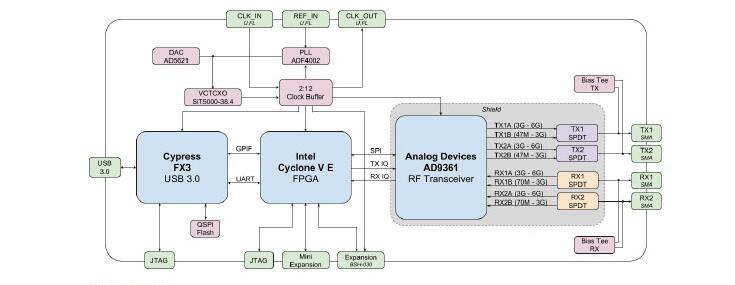
| Quantity | 3+ units | 10+ units | 30+ units | 50+ units | More |
|---|---|---|---|---|---|
| Price /Unit | $897.23 | $878.92 | $851.45 | $814.83 | Contact US |
 STK428-640 HiFi Power Amplifier Board 200Wx2 Class D High Power Amplifier Module PWM CMOS Logic Level Audio Input
$36.49
STK428-640 HiFi Power Amplifier Board 200Wx2 Class D High Power Amplifier Module PWM CMOS Logic Level Audio Input
$36.49
 OPS200 Dual Operational Amplifier 60mA Class A Op Amp for Low Impedance Circuit Amplifier and Drivers
$15.79
OPS200 Dual Operational Amplifier 60mA Class A Op Amp for Low Impedance Circuit Amplifier and Drivers
$15.79
 PAP-HD1-XLR Hi-End Fully Balanced Preamplifier Board Support Remote Control Replacement for HDAM Circuit
$84.53
PAP-HD1-XLR Hi-End Fully Balanced Preamplifier Board Support Remote Control Replacement for HDAM Circuit
$84.53
Nuand BladeRF 2.0 Micro xA4 SDR Board RF Development Board 47MHz-6GHz DC 5V with USB 3.0 Cable
Description:
The bladeRF 2.0 is an upgraded USB 3.0 software-defined radio development board. On-board 49 KLE FPGA (model xA4), meeting the needs of amateurs and RF developers.
Functions:
The bladeRF 2.0 micro is a new generation software radio (SDR) with a frequency range covering 47MHz to 6GHz. The bladeRF 2.0 micro is small and compact, only the size of a mobile phone. It is designed for high performance and mobile applications. Through libbladeRF, the bladeRF 2.0 micro is compatible with GNURadio, GQRX, SDR-Radio, SDR#, gr-fosphor, SoapySDR on Windows, Linux and macOS. All RF SMA ports can provide power to broadband amplifiers and preamplifiers through T-bias circuits. The functions of the T-type bias circuit peripherals can be completely controlled by software, providing maximum operational flexibility. At present, the official T-type bias circuit peripherals include the broadband power amplifier BT-100 for TX and the broadband low noise amplifier BT-200 for RX.
Specification:
Device: BladeRF 2.0 xA4
Frequency range: 47MHz-6GHz
RF bandwidth: 61.44MHz
ADC sampling accuracy: 12bits
DAC sampling accuracy: 12bits
Sampling rate: 61.44MSPs
Transmitter channel: 2
Receiver: 2
Duplex: full duplex
Interface: USB 3.0
FPGA: 49k
Transmit power: +8dBm
Local Oscillator stability: +/-1ppm
Chip: AD9361
Features:
Convenient Portability:
BladeRF 2.0 is a bus-powered device that does not require an external power supply without T-type bias circuit peripherals. It has a smaller volume of 12.7*6.35*2.54cm than the previous generation, and a lighter weight of 363 grams.
Professional Quality:
The bladeRF’s professional design has been tested and verified to meet our very high standard. Each device can easily achieve high-quality transceiving and even the highest order modulation. At the peak RF performance, bladeRF can occupy 2x2 56MHz of bandwidth over its operating frequency range without significant distortion, and the EVM is about 1%.
Super Speed USB 3.0:
High-speed, low-latency and increased power output over a single cable; USB 3.0 is an ideal high-speed interface for communication between a broadband RF front-end and a computer. The Cypress FX3 microcontroller with a high-performance ARM9 controller can provide sufficient bandwidth for full-duplex 5 Gbps USB 3.0 link.
Fully Programmable FPGA:
Altera Cyclone V FPGA provides the interface between FX3 and RF transceiver. FPGA has embedded single-cycle memory, dedicated DSP hardware 18x18 multiplier and a large number of programmable general-purpose logic units.
Broadband RF Transceiver:
Analog Devices' AD9361 is a fully integrated high-performance RF transceiver. The transceiver is designed for the next-generation wireless protocol and can handle everything from simple FM audio to the latest 5G LTE standard and any content that may exist in the future.
Technical Parameters:
-Frequency range is 47MHz-6GHz.
-USB 3.0 single cable realizes high speed, low latency and enhanced power transmission capability.
-Portable development board, the size is 12.7*6.35*2.54cm.
-Gold-plated RF SMA female connector.
-2x2 MIMO, 61.44MHz sampling rate.
-56MHz filtered bandwidth (IBW).
-Factory calibrated 38.4MHz, +/-1ppm high-precision temperature-controlled oscillator.
-On-board 200MHz ARM926EJ-S processor (JTAG interface), Altera Cyclone 5E FPGA (available JTAG interface).
-Fully powered by the bus, through USB 3.0, when connected to external T-type bias circuit equipment, it can be powered by 5V DC, with automatic switching function.
-High efficiency, low noise power architecture.
-Support for software: GNU Radio via gr-osmosdr, Pothos via SoapySDR, SDRange, SDR Console, SDR# via sdrsharp-bladeRF, MathWorks MATLAB® &Simulink® via libbladeRF bindings.
Package List:
-1 x BladeRF 2.0 Micro SDR Board
-1 x USB 3.0 Cable
